The Ultimate Logo Design Guide for Small Businesses in 2025

In today's visually-driven marketplace, your logo isn't just a pretty design—it's the face of your business that customers will recognize everywhere. Whether you're launching a new venture or refreshing your brand identity, a well-designed logo can make all the difference in how potential customers perceive your business.
The good news? You don't need to be a design expert or have a massive budget to create a professional logo that stands out. With AI-powered tools like Lovart, small businesses now have access to sophisticated design capabilities that were once available only to those with deep pockets and professional designers on staff.
In this comprehensive logo design guide, we'll walk through everything you need to know to create a memorable, effective logo for your small business using Lovart. From understanding fundamental design principles to practical step-by-step instructions, this guide has you covered!
Why Your Small Business Logo Matters
Before diving into the how-to portion of our logo design guide, let's talk about why investing time in your logo design process is so important:
- First Impressions Count: Your logo is often the first visual element customers associate with your business. In a marketplace where you have mere seconds to capture attention, a distinctive logo helps make those seconds count.
- Brand Recognition: Think about how quickly you recognize the golden arches of McDonald's or the swoosh of Nike. A well-designed logo sticks in people's minds and helps them remember you when they're ready to buy.
- Professional Credibility: A thoughtfully designed logo signals that you take your business seriously. It builds trust with potential customers before they even interact with your products or services.
- Competitive Advantage: In a crowded marketplace, a unique, eye-catching logo helps you stand out from competitors vying for the same customers' attention.
With Lovart's AI-powered design capabilities, creating a professional logo that communicates your brand's values and personality is more accessible than ever for small businesses. No more settling for generic templates or breaking the bank on professional design services!
Understanding the Fundamentals of Logo Design
Before jumping into the Lovart platform, it's worth understanding some core principles that make logos effective. These fundamentals of logo design will guide your creative decisions and help you evaluate the options Lovart generates.
Simplicity: Keep It Clean and Clear
The most iconic logos in the world share one common trait: simplicity. Think of Apple's apple or Twitter's bird. Simple designs are:
- Easily recognizable at a glance
- Memorable for consumers
- Versatile across different applications and sizes
- Timeless rather than trendy
When using Lovart to create your logo, resist the temptation to include too many elements or complicated details. The simpler your design, the more effective it will be in representing your brand across various platforms and sizes.
💡Prompt Example: "Create a simple, clean logo for a local coffee shop called 'Morning Brew' that focuses on organic, sustainably sourced coffee. The design should work well on coffee cups, signage, and digital platforms."
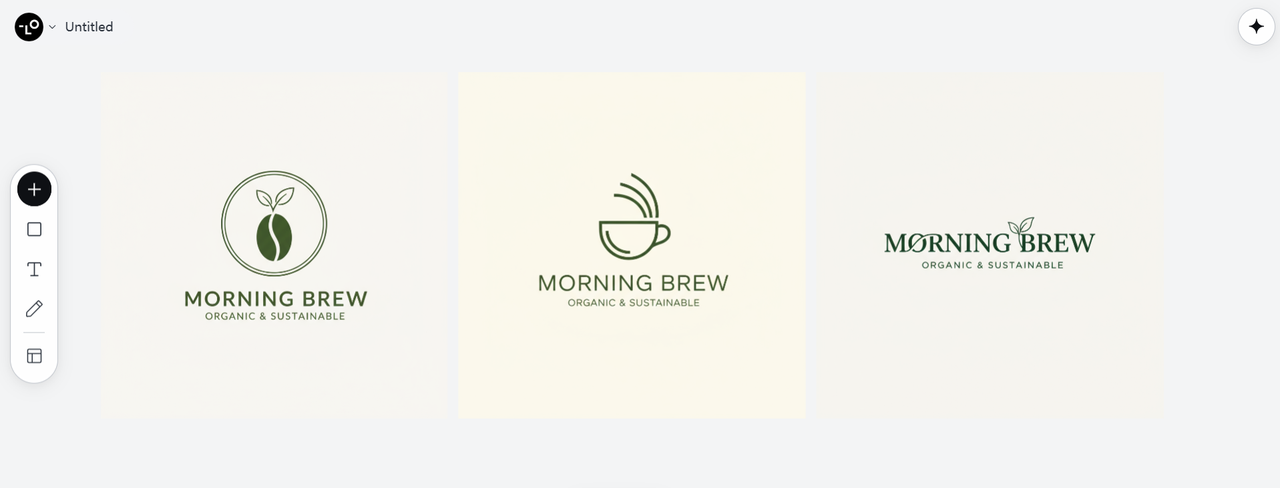
Relevance: Make It Appropriate for Your Business
Your logo should align with your industry and speak to your target audience. A playful, colorful logo might be perfect for a children's toy store but would send the wrong message for a financial advisory firm.
Consider what your business stands for and who your customers are. Are you:
- Professional and corporate?
- Creative and artistic?
- Eco-friendly and sustainable?
- Luxurious and exclusive?
- Friendly and approachable?
Your logo should visually communicate these attributes through its style, colors, and overall design.
💡Prompt Example: "Design a professional logo for 'Elite Financial Advisors,' a wealth management firm serving high-net-worth individuals. The logo should convey trust, stability, and sophisticated expertise."
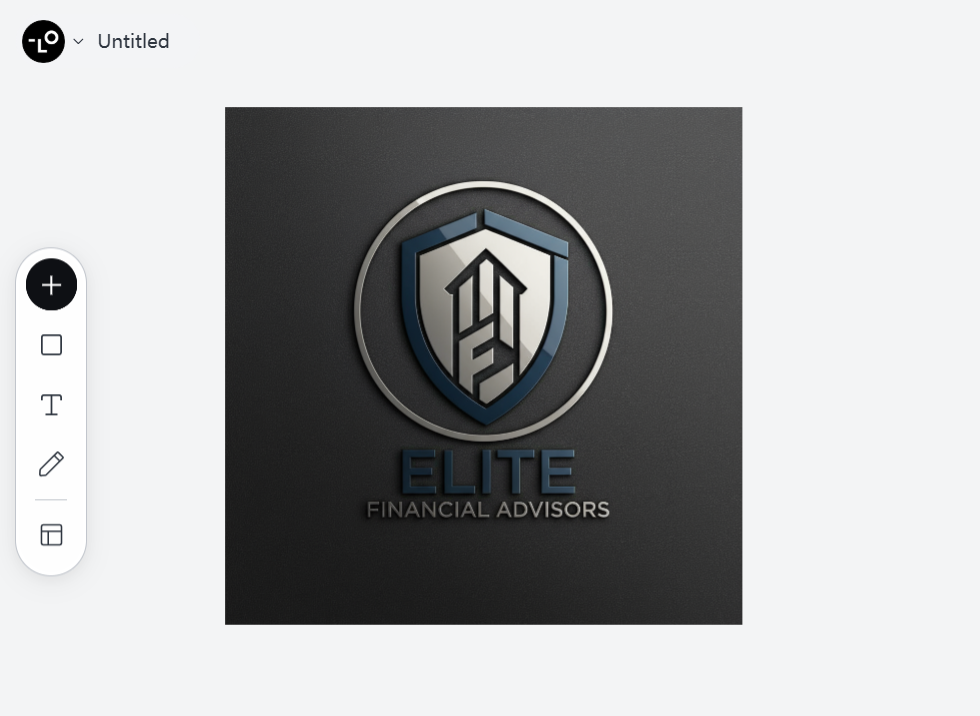
Memorability: Create Something Distinctive
In a world filled with logos, yours needs to stand out and be remembered. Distinctive doesn't mean complicated—often, a unique twist on a simple concept creates the most memorable logos.
Think about what makes your business unique and how you might incorporate that into your design. Is there:
- A clever visual pun related to your business name?
- A distinctive symbol that represents your services?
- A unique color combination that sets you apart?
💡Prompt Example: "Create a distinctive logo for 'Swift Delivery,' a local courier service that specializes in same-day deliveries. Incorporate elements that suggest speed and reliability, perhaps with a unique twist on movement or direction."
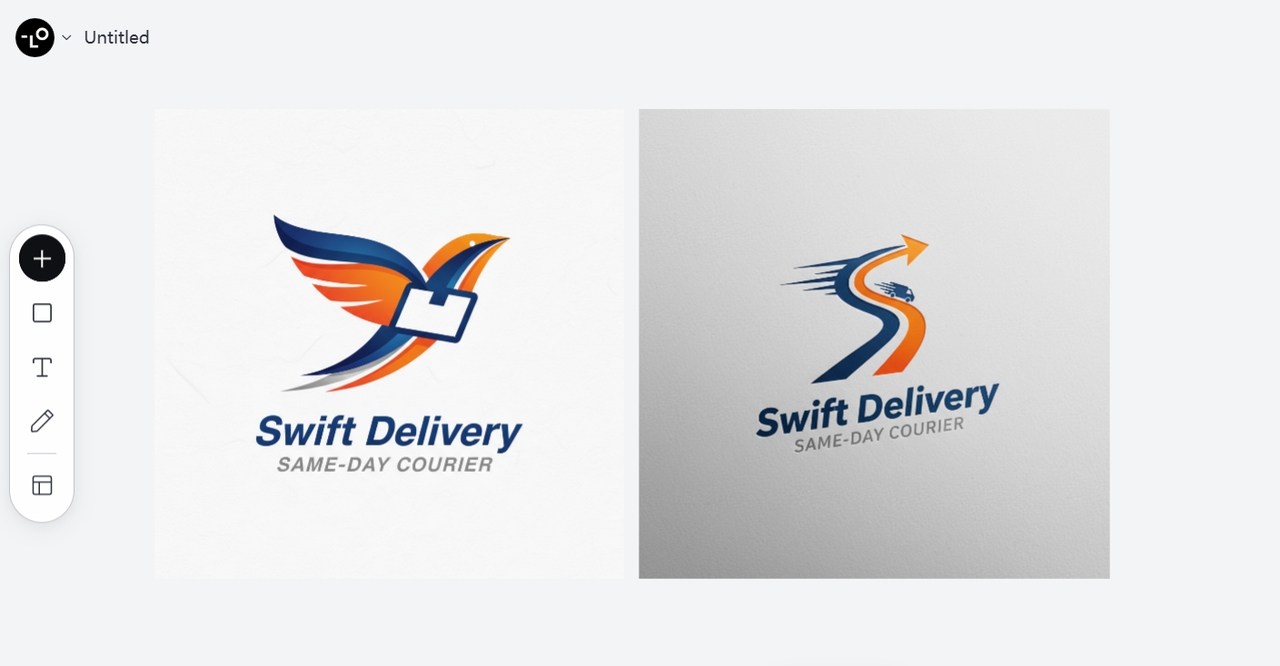
Versatility: Design for Multiple Applications
Your logo will appear across numerous platforms and materials—from your website and social media profiles to business cards, signage, and possibly merchandise. A versatile logo works effectively:
- In color and black-and-white versions
- At very large sizes (billboards) and very small sizes (app icons)
- Across different backgrounds and contexts
- In horizontal, vertical, or square formats if needed
When evaluating logo options in Lovart, imagine how each would look in these different scenarios.
💡Prompt Example: "Generate a versatile logo for 'Green Thumb Landscaping' that works well on business cards, vehicle signage, uniforms, and social media profiles. The logo should be recognizable even when scaled down to small sizes."
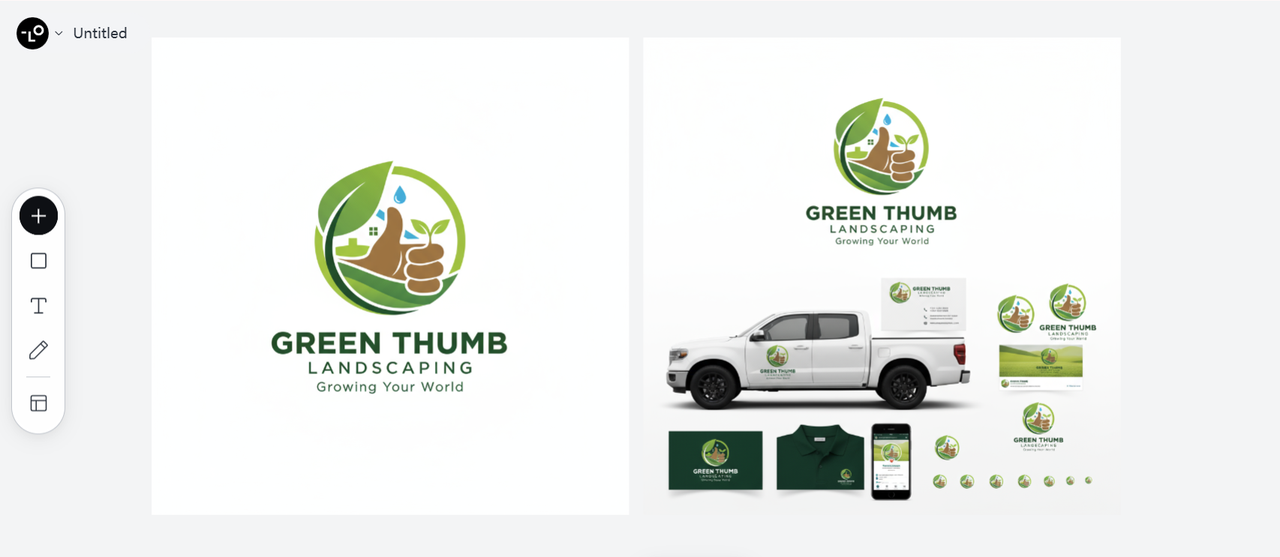
Timelessness: Avoid Short-Lived Trends
While it's tempting to embrace the latest design trends, a truly effective logo stands the test of time. Trends come and go quickly, and you don't want to invest in rebranding every few years.
Focus on classic design principles rather than flashy effects that may look dated in a short time. This doesn't mean your logo can't be modern—just avoid elements that scream "2025 design trend."
💡Prompt Example: "Design a timeless logo for 'Heritage Bakery,' a family-owned business that's been operating for three generations. The logo should feel classic yet contemporary, avoiding trendy elements that might look dated in a few years."
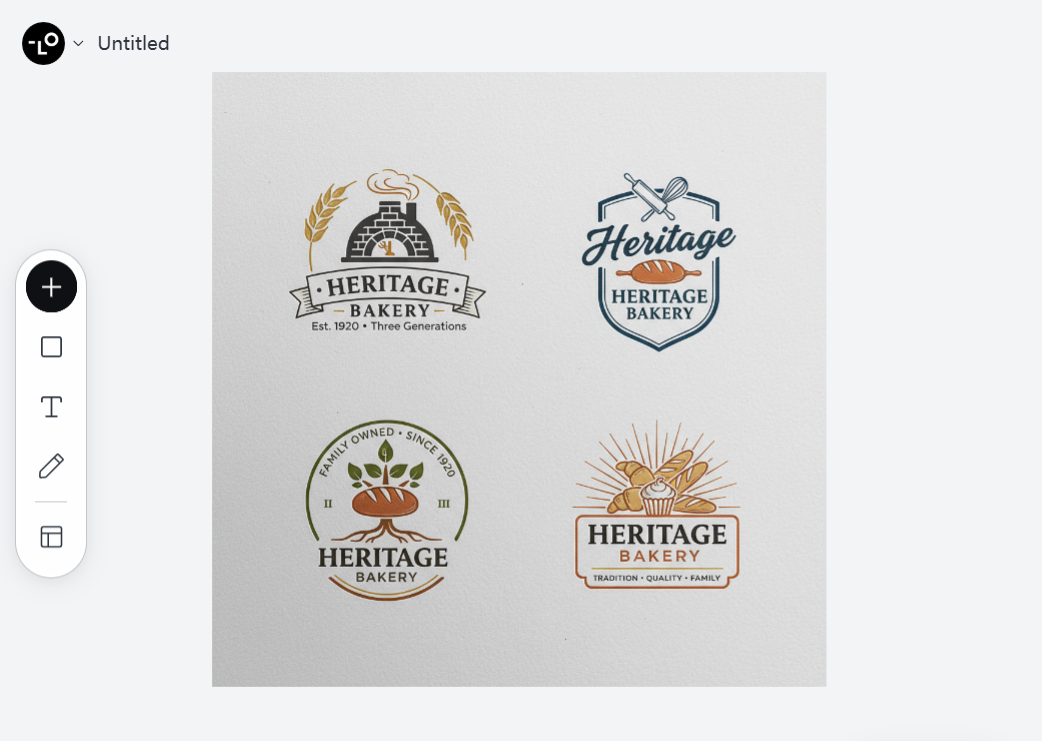
Types of Logos to Consider for Your Small Business
Now that we understand the fundamental principles, let's explore the different types of logos you might create with Lovart. Each style has its strengths and is suited to different business types and goals.
| Logo Type | Description | Best For |
|---|---|---|
| Wordmark (Logotype) | Text-only logo featuring your business name in a distinctive font | Businesses with unique or short names; services where brand name recognition is key |
| Lettermark (Monogram) | Uses initials or abbreviations of your business name | Companies with long names; businesses seeking a modern, minimalist look |
| Brand Mark (Symbol) | A standalone icon or symbol without text | Established businesses with strong recognition; international brands crossing language barriers |
| Combination Mark | Combines text with a symbol or icon | New businesses building recognition; versatility across different applications |
| Emblem | Text inside a symbol or icon (think badges, seals, crests) | Traditional industries, educational institutions, government organizations |
| Abstract Mark | A symbolic shape that represents your business conceptually | Modern, innovative companies; businesses seeking a unique visual identity |
| Mascot | A character that represents your brand | Family-friendly businesses; companies wanting a personable, approachable image |
When using Lovart, you can specify which type of logo you're interested in, or ask the AI to generate options across several styles to compare.
💡Prompt Example: "Create three different logo options for 'Urban Fitness Studio': (1) a wordmark version with dynamic typography, (2) a combination mark with a simple icon representing strength or movement, and (3) an abstract mark that suggests energy and transformation."
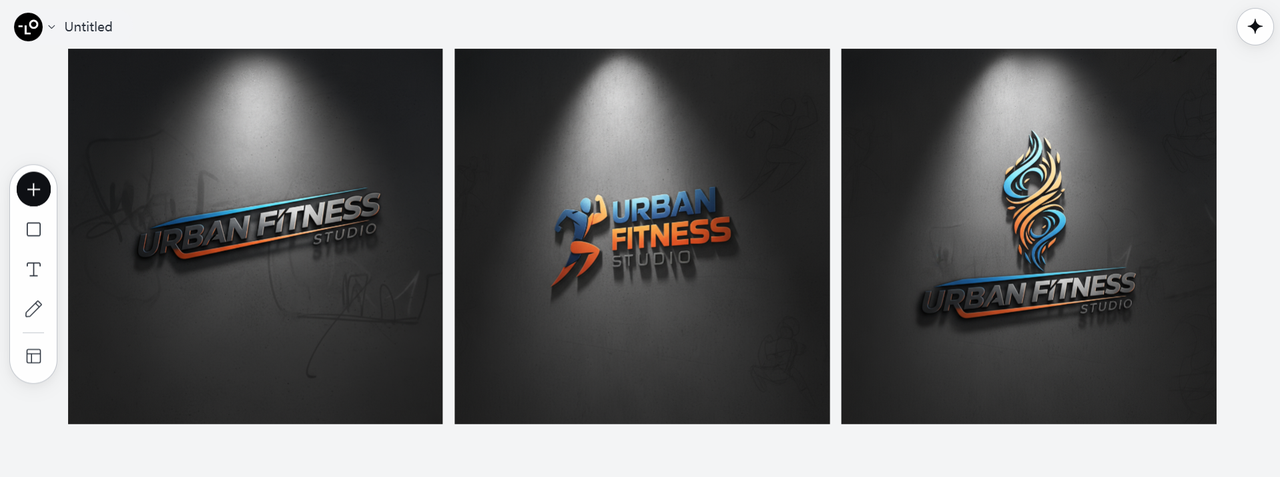
The Step-by-Step Logo Design Process Using Lovart
Now let's dive into the practical process of creating your small business logo using Lovart. This AI-powered platform streamlines the design process while still giving you creative control.
Step 1: Define Your Brand Identity
Before opening Lovart, take some time to clarify what your brand stands for. This foundational work will make your prompts more effective and result in better-aligned designs.
Ask yourself these key questions:
- What are your brand's core values? (Examples: innovation, reliability, sustainability, luxury, creativity)
- How would you describe your brand personality? (Examples: professional, playful, sophisticated, rugged, caring)
- Who is your target audience? (Consider demographics, interests, and values)
- What sets your business apart from competitors? (Your unique selling proposition)
- Where will your logo primarily be used? (Digital platforms, physical products, signage)
Write down your answers to reference as you craft your Lovart prompts.
💡Prompt Example: "I need a logo for 'Evergreen Home Solutions,' a sustainable home renovation company. Our brand values include environmental responsibility, craftsmanship, and innovation. Our target audience is environmentally conscious homeowners aged 30-55 with above-average income. We want to convey professionalism while highlighting our eco-friendly focus."
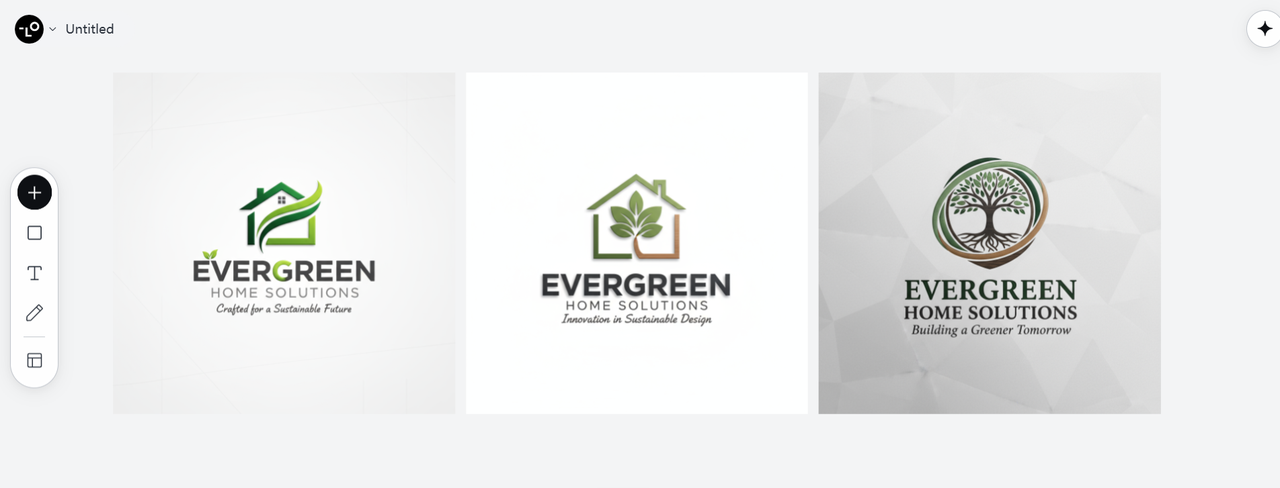
Step 2: Research Competitors and Gather Inspiration
Before generating your own logo, it's helpful to understand what's already out there—both to ensure your design stands out and to gather inspiration for elements you might like.
Look at:
- Direct competitors in your industry and local area
- Successful brands with similar values or target audiences
- Design trends relevant to your industry
Note what works well and what doesn't, but remember—the goal isn't to copy, but to create something distinct for your brand.
💡Prompt Example: "Create a logo for 'Coastal Cleaning Services' that stands out from competitors. I've noticed most cleaning companies in my area use blue bubbles or mops in their logos. I'd like something fresh that still communicates cleanliness and reliability but doesn't use these overused elements."
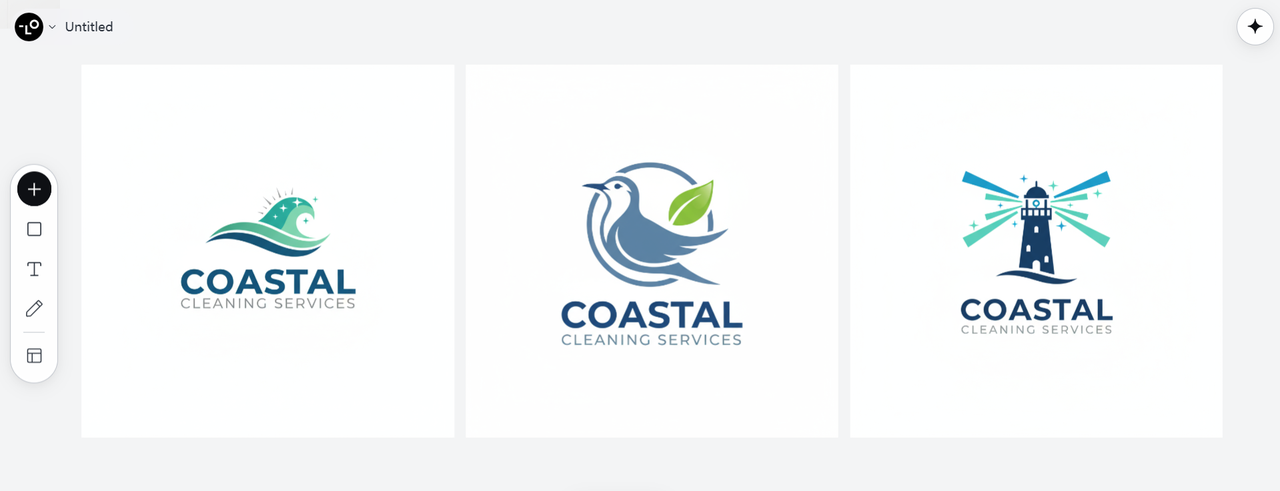
Step 3: Choose Your Color Palette
Colors evoke specific emotions and associations. Select colors that align with your brand personality and industry while also ensuring they'll work well across various applications.
| Color | Common Associations | Industry Examples |
|---|---|---|
| Blue | Trust, reliability, professionalism | Finance, healthcare, technology |
| Red | Energy, excitement, passion | Food, entertainment, fitness |
| Green | Growth, health, sustainability | Environmental, wellness, agriculture |
| Yellow | Optimism, clarity, warmth | Energy, food, children's products |
| Purple | Creativity, wisdom, luxury | Beauty, spirituality, premium products |
| Orange | Friendliness, enthusiasm, affordability | Food, entertainment, retail |
| Black | Sophistication, authority, elegance | Luxury, fashion, technology |
| White | Simplicity, cleanliness, purity | Healthcare, minimalist brands, weddings |
For most small businesses, a palette of 2-3 colors works best for logos. You can specify color preferences in your Lovart prompts.
💡Prompt Example: "Design a logo for 'Sunrise Bakery' using warm, inviting colors like soft orange and warm yellow, possibly with accents of brown to represent baked goods. Avoid cool colors like blue or purple that don't associate well with fresh baking."
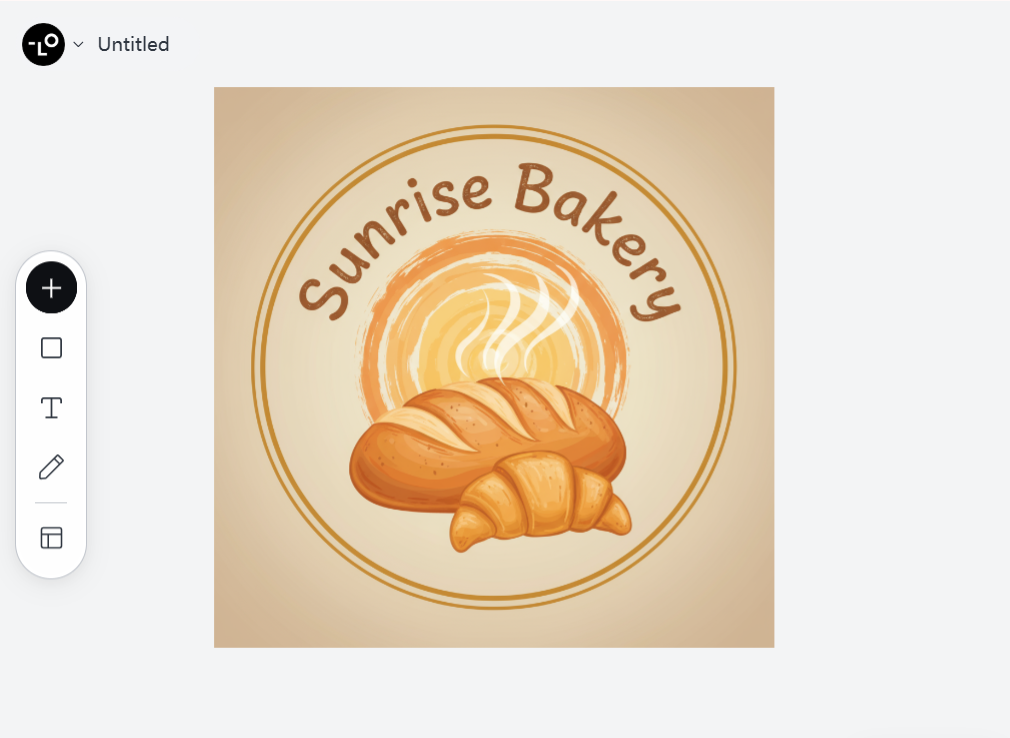
Step 4: Select Typography That Fits Your Brand
If your logo includes text, typography plays a crucial role in communicating your brand's personality. Different font styles evoke different feelings:
- Serif fonts (with small lines at the ends of characters): Traditional, reliable, respectable
- Sans-serif fonts (without those small lines): Modern, clean, straightforward
- Script fonts (resembling handwriting): Elegant, creative, personal
- Display fonts (decorative, distinctive): Unique, expressive, memorable
- Slab serif fonts (bold, blocky serifs): Strong, industrial, confident
Choose typography that not only reflects your brand personality but is also highly legible, even at smaller sizes.
💡Prompt Example: "Create a logo for 'Modern Legal Solutions,' a forward-thinking law firm. Use clean, professional typography—preferably a sans-serif font that looks contemporary while maintaining authority and trustworthiness. The font should be easily readable on business cards and digital platforms."
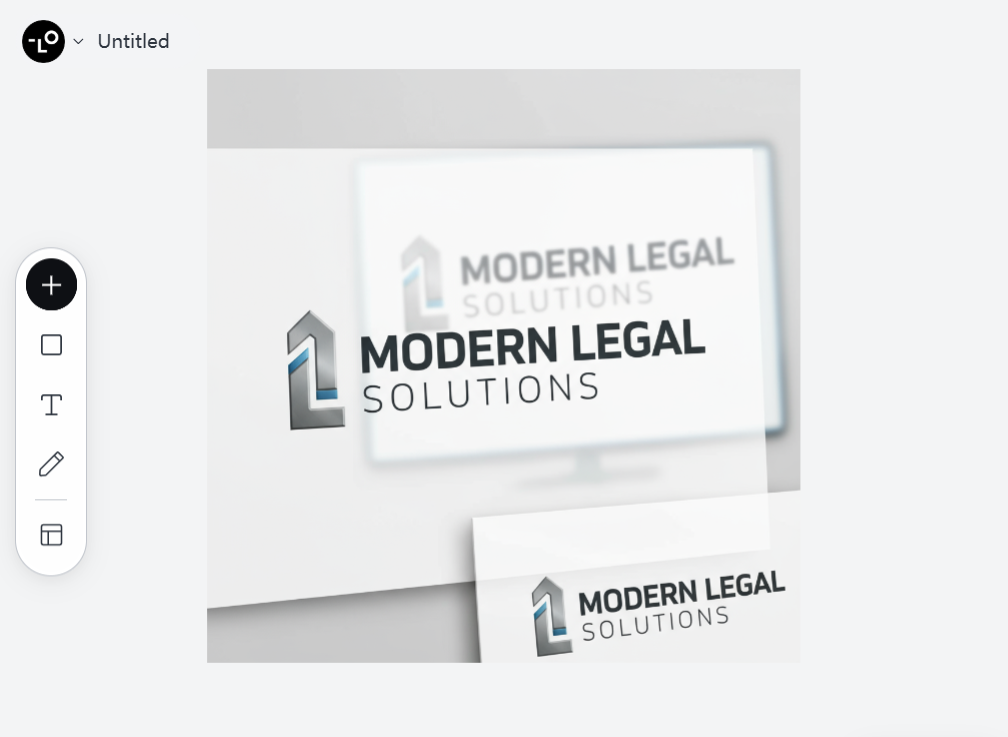
Step 5: Generate Logo Options with Lovart
Now it's time to put Lovart to work! Using the insights from steps 1-4, craft detailed prompts that will guide the AI in generating logo options that align with your vision.
Effective prompts include:
- Your business name and industry
- Brand personality descriptors
- Color preferences
- Typography style
- Logo type preference (wordmark, combination mark, etc.)
- Any specific symbols or elements to include or avoid
- Where the logo will be used
💡Prompt Example: "Generate logo options for 'Wilderness Adventures,' an outdoor tour company specializing in hiking and camping experiences. Create a combination mark logo with a distinctive icon representing nature/exploration paired with modern, sturdy typography. Use colors that evoke the outdoors like forest green, earthy brown, and possibly a touch of sky blue. The logo should work well on website headers, social media profiles, and embroidered on outdoor gear."
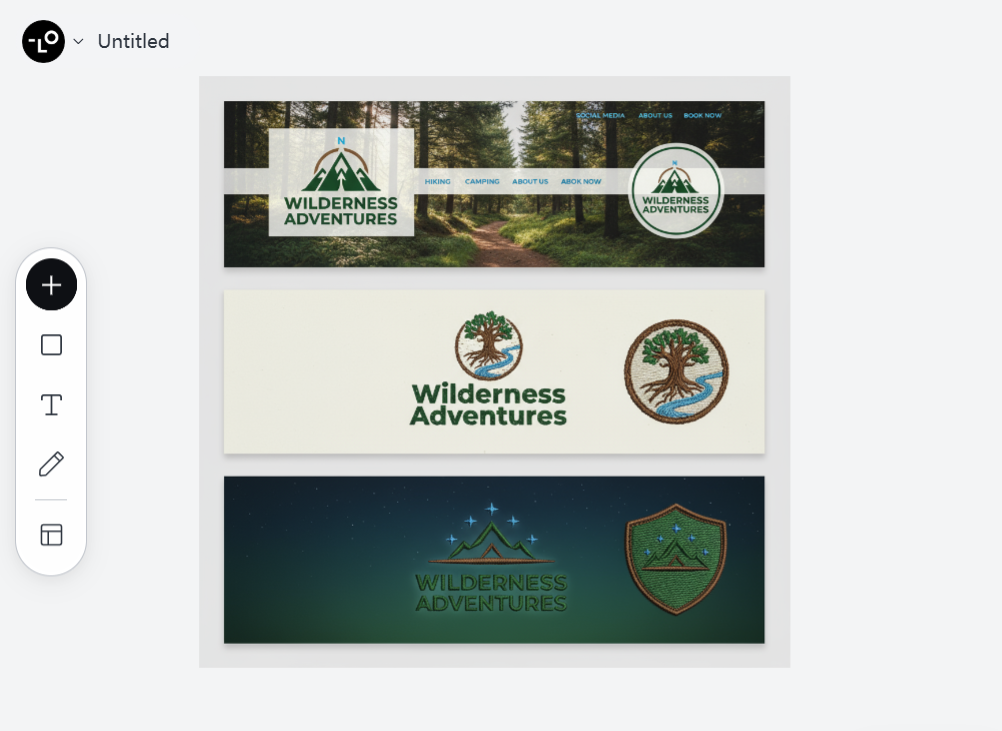
Step 6: Evaluate and Refine Your Options
After Lovart generates your initial logo options, evaluate them carefully against these criteria:
- Alignment with brand identity: Does it communicate your values and personality?
- Distinctiveness: Does it stand out from competitors?
- Simplicity: Is it clean and uncluttered?
- Versatility: Will it work across different applications and sizes?
- Legibility: Can you easily read any text from a distance?
- Memorability: Is it likely to stick in customers' minds?
Based on this evaluation, you can ask Lovart to refine specific options or generate new variations.
💡Prompt Example: "I like the second logo option for 'Fresh Farms Market' but would like to see some refinements: (1) Make the leaf element slightly smaller in proportion to the text, (2) Try a slightly darker shade of green for better contrast, (3) Add a little more spacing between the words 'Fresh' and 'Farms,' and (4) Show me versions both with and without 'Market' included in the logo."
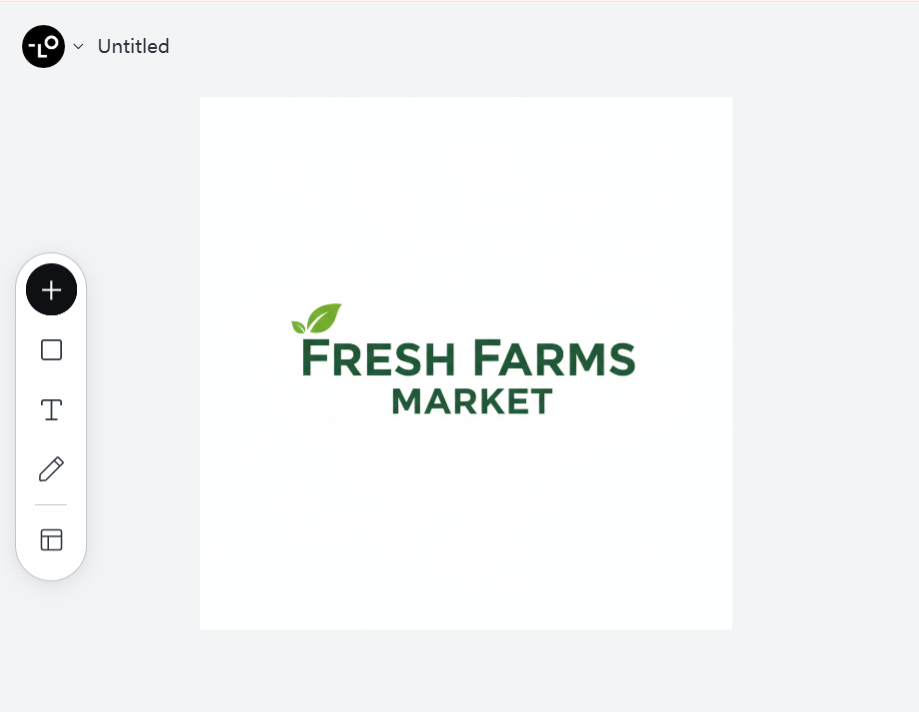
Step 7: Test Your Logo in Different Contexts
Before finalizing your choice, it's crucial to see how your logo performs in various real-world applications. Ask Lovart to show you mockups of your logo on:
- Business cards and stationery
- Website header and favicon
- Social media profiles
- Signage or storefronts
- Product packaging if applicable
- T-shirts or promotional items
- Black and white versions
This testing phase often reveals practical issues that weren't obvious in the initial design.
💡Prompt Example: "Show me how my selected 'Urban Bike Shop' logo would look across different applications: on a storefront sign, as a social media profile picture, on business cards, on t-shirts, and as a small app icon. Also show me how it looks in black and white for single-color printing."
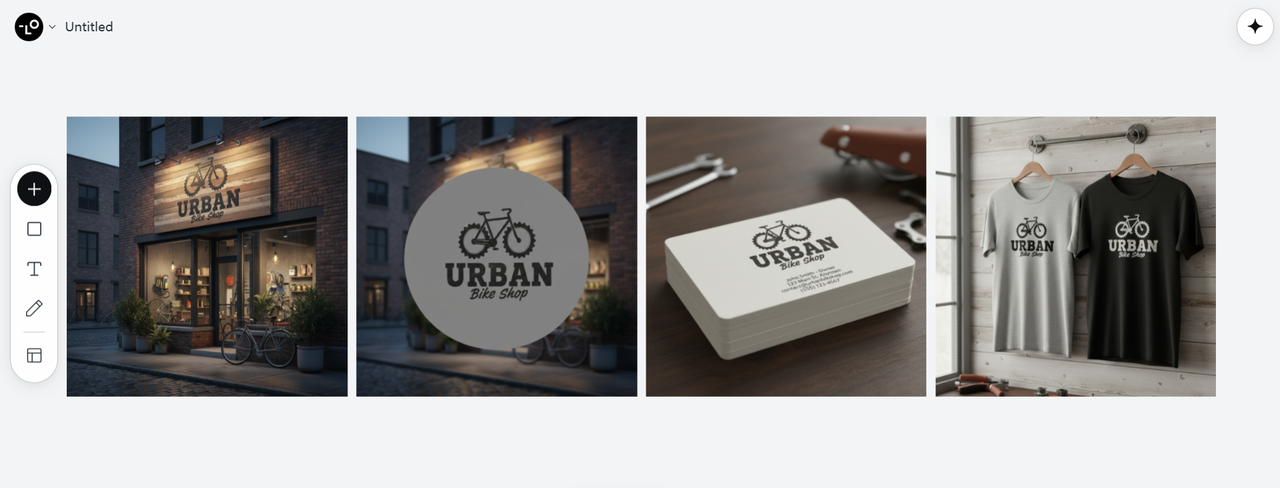
Step 8: Finalize Your Logo Design
After testing and refinement, it's time to finalize your logo. Lovart can provide you with the final files in various formats suitable for different applications:
- Vector files (.SVG, .EPS, or .AI) for scaling to any size without losing quality
- High-resolution PNG files with transparent backgrounds for digital use
- JPEG files for simple applications
- Different color variations (full color, black, white, grayscale)
💡Prompt Example: "I've decided on the final logo design for 'Mountain View Photography.' Please provide me with the complete logo package including vector files, high-resolution PNGs with transparent backgrounds, JPEGs, and versions in full color, black, and white for different applications."
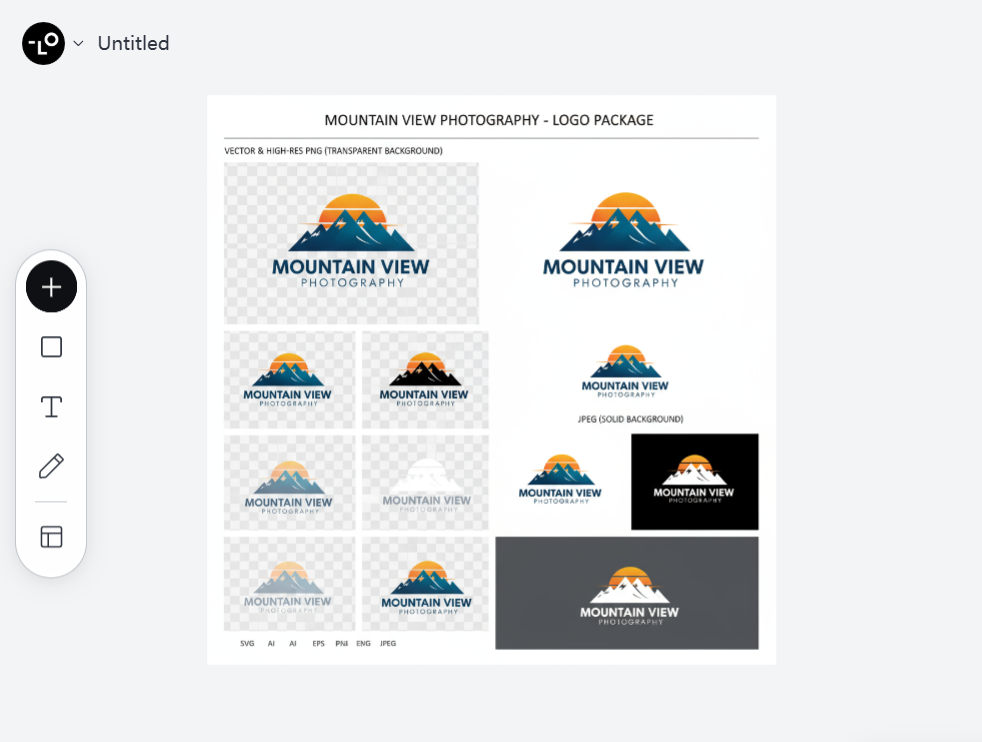
Conclusion: Your Logo Journey with Lovart
Creating an effective logo for your small business doesn't have to be complicated or expensive. With Lovart's AI-powered design capabilities, you can develop a professional, distinctive logo that communicates your brand's unique value and resonates with your target audience.
Remember that your logo is just one element of your overall brand identity, but it's an important visual shorthand that helps customers recognize and remember your business. By following the principles and process outlined in this logo design guide, you'll create a logo that serves your business well for years to come.
The beauty of using Lovart for your logo design process is that you can easily generate multiple options, refine your favorites, and visualize how they'll look in real-world applications—all without advanced design skills or expensive software.
Ready to create your small business logo? Log into Lovart now and put these logo design tips to work for your brand! Your perfect logo is just a few prompts away.

Condividi Articolo